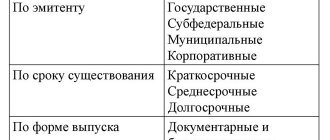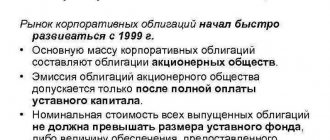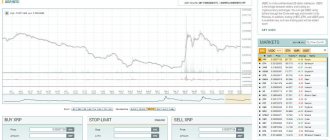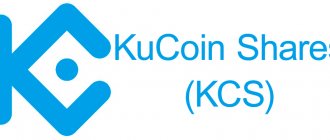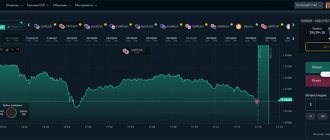Investments in securities issued by public or private market participants bring the greatest total profit. When selling bonds, companies always provide general information about the yield, among which you can find terms such as yield to maturity and yield to the nearest offer.
And if the first term does not raise questions even among novice investors, then the second one confuses even the most experienced investors. Issuers explain that the offer date of a bond is the day upon which investors have the right to redeem the asset at the nominal price.
What is a bond offer?
An offer, or bond proposal, is a specific agreement under which the issuer has the right to pay off financial obligations under debt notes early. If an offer is specified in the agreement between the parties, then the asset-issuing company can buy out all the securities when it is convenient for it.
In general, the term yield to offer implies the amount that an investor can receive in the period before the first call option by the issuer of the securities. For example, if an investor purchased ten-year bonds and decided to sell them prematurely, then he has the right to do this without waiting for the next redemption date. Typically, the bond-issuing company repurchases assets every three years.
There are two options for bond offers:
- Review or Call. This type of agreement allows the issuing company to close all its obligations to depositors ahead of schedule. In this case, the owner of the assets is obliged to provide his securities for sale. Such securities allow issuers to protect themselves from risks associated with shares and other securities.
- Irrevocable or Put. Securities issued under an irrevocable offer can be purchased by the issuer within the time period specified in the contract. At the same time, the investor is not obliged to sell his securities and has the right to continue to receive dividends for owning the bonds.
Obviously, Call bonds are less profitable for a potential investor than Put bonds. Therefore, such securities have increased profitability and offer investors more favorable conditions for receiving dividends.
Revocable and irrevocable offer on bonds in simple words
A short introduction. My acquaintance with the bond offer was not the most pleasant. First of all, out of ignorance. Here is how it was.
I needed to secure N-amount of money for several months (almost a year). I decided to buy bonds. After analyzing offers and current yields, I chose corporate bonds with a good coupon rate. Securities from a reliable issuer.
I bought it and forgot it. By the end of the period I need, I hope to earn money on coupons and sell the bonds at the market price.
A few months later I went into the terminal and saw...or rather, I didn’t see the previously purchased securities in the portfolio. And instead of them - a sum of money.
It turned out that the securities were redeemed at par as a result of the offer.
I had to look for new offers again. And buy other papers.
Of course nothing bad happened.
But as a result: lost lost profit during the time when the money was simply lying idle.
I had never paid attention to such a parameter as an offer before. But as they say, you learn from mistakes.
What is a bond offer in simple words?
A bond offer is the opportunity or right of investors to redeem (sell) a security at a nominal price to the issuer on a predetermined date, without waiting for the end of the bond’s “life” period.
For example, an investor bought 10-year bonds. After a certain period of time (usually after 3 years), the issuer issues an offer.
The investor can sell the securities. And get your money back. Or maybe keep them for yourself. Continuing to receive coupon income.
If we draw an analogy with ordinary life, then an offer on bonds can be compared to early repayment of a loan.
The borrower takes out a loan from a bank for a certain period. And he pays interest every month. A year later, he suddenly had a certain amount of extra money (he won the lottery, received an inheritance).
If the loan agreement specifies the possibility (offer) of early repayment, then a person can exercise this right. Or maybe not. Spend all the money and continue paying off the loan.
There are two types of offer on bonds:
An irrevocable offer gives the owner the opportunity to redeem his securities from the issuer. But he may not do this. It is his right to choose.
A revocable offer works the other way around. The issuer that issues the security has the right, without the consent of the bond holders, to repay its own bonds ahead of schedule. And completely pay off your debt.
Most often, in the debt market, it is securities with an irrevocable offer. The second type is not very common. But he is. Convinced from my own experience (((
Why is an offer needed?
In order to answer this question, you need to understand what benefits it brings. First of all, of course, for the issuer.
After all, if there is one (an offer), then the issuer pursues certain goals - namely financial ones.
The offer allows you to control financial flows and, in favorable situations, completely or partially reduce the debt burden.
For example, securities issued several years ago gave a good coupon, say 12% per annum. But during this time the situation changed.
And now the average market rate is 8%. The issuer is forced to pay investors more coupon money every year than other companies.
Having established an offer, he can buy back part of the bonds (or the entire issue).
And, if necessary, issue new securities with an average market coupon of 8% per annum. As a result, debt servicing costs are reduced by 30%.
The second option for the issuer is to reduce the size of future coupon payments. They gave 12%, it will be 8%. And again the issuer is in the black.
As a rule, for securities for which a date has been established, the offer - the amount of coupon payments - is fixed only for this time. And then... according to the situation.
Investors buying bonds, especially long-term ones, for which an offer is provided, know for sure that they can present them for redemption on the day of the offer and get all the money back. Without waiting for the maturity date.
In this case, investors will bear lower risks. When purchasing long-term bonds, owners are exposed to increased risks due to the long circulation period of the securities. For example, changes in interest rates. What may lead to a decrease in the market value of the bond.
But at the same time, the long circulation period of securities is compensated by a higher yield (risk premium) compared to short-term securities.
The future offer allows you to have an increased yield (typical of long-term bonds) with the ability to repay it in a short period of time. With full protection against price drops below par.
The main disadvantage of bonds with an offer for investors is a possible reduction in coupon rates.
The issuer, as described above, may set lower rates on future coupons. Thus, forcing investors to repay securities.
For example, we bought ten-year bonds with a very high yield. It would seem - live and be happy. You can receive a fixed profit annually for 10 years.
And after 3 years - an offer. And the issuer reduces new payments. What to do?
Either he will accept lower returns or sell the paper and look for other lucrative offers.
Therefore, they mainly do not look at the yield to maturity. And on the profitability of the offer.
Until the date when the amount of coupon payments is known in advance.
Bonds for dummies - what, how and how much
Where can I view the offer?
In the Quik trading terminal, you can configure the bond list window to display the necessary information.
We need the following data:
- redemption - the date of full repayment of the bond;
- offer - shows whether there is an offer on the paper or not;
- date of calculation of profitability - to the nearest date of the offer;
- yield - there is an offer on the security, the yield is calculated based on this date. Otherwise - to the maturity date.
Using PIK BO-4 paper as an example.
Repayment will take place in 2025. The bond has an offer date of August 17, 2018. The repurchase will take place at nominal value (offer - 100). The yield is calculated based on the nearest offer - 9.01% per annum.
More detailed information can be found on the website Rusbonds.ru
We search for the required bond either by its name. Or by ISIN code (it is unique for each paper).
We see that the fixed coupon size is set only until the offer date.
An irrevocable offer has been established on the papers. And the repayment terms are indicated. Procedure and period of presentation and payments. And a lot of other information.
How to submit bonds for an offer?
Usually the operation is carried out through a broker. Or in your personal account. Everyone has their own algorithms. Contact your broker - he will tell you the correct procedure.
The main thing is to present bonds for redemption no later than 3 days before the deadline for accepting applications. The money is credited within two to three weeks maximum. In most cases - usually several days. Here everything will depend on the issuer.
Source: https://vse-dengy.ru/upravlenie-finansami/aktsii/oferta-obligatsiy.html
Why is an offer needed?
The offer is needed to increase the liquidity of the issued bonds. Bond redemption offers can be beneficial to both issuers and investors:
| Type of offer | Key Benefits | Flaws |
| Call option | An offer of this type is beneficial exclusively for the issuer. Call option allows you to:
|
|
| Put option | The irrevocable offer has ideal conditions for investors. The key advantages of this type of proposal are considered to be:
| The disadvantages of irrevocable offers from issuers affect only the issuers. The disadvantages of Put options are:
|
Thus, the main function of offering early repayment of bonds is to control financial flows and reduce the debt burden at the first convenient opportunity.
An example of using a Put option: an investor buys debt securities with a yield of 8% per annum and a maturity of 5 years. Two years later, the economic situation is changing seriously and most companies are releasing assets with a yield of 15% per annum. Then the option investor sells insufficiently profitable assets to the issuer and uses the proceeds to buy high-yield assets from the Central Bank.
The use of a Call option for issuers can be illustrated with the following example: a company issues securities of a perpetual type with a yield of 15% per annum. The investor purchases these securities and holds them for several years.
Over time, the economic situation in the country stabilizes and companies begin to issue loan receipts with a profitability of 10%. Thus, the first company is forced to overpay 5%. To avoid additional costs, the organization declares a Call option and forcibly buys all bonds from the market.
In most cases, for securities with an established offer, there is a fixed coupon income only up to a certain time. After the maturity date of the securities passes, the return on assets may decrease significantly.
Where can I view the offer?
You can view the main parameters of the agreement between the issuer of the security and the investor in the trading terminal.
When opening information about any issued securities, investors need to pay special attention to the following points:
- date of full redemption of securities;
- presence or absence of an additional offer;
- date for calculating the yield for the nearest offer;
- the yield of a security until its next maturity.
The sale of assets with a Put option should be carried out during the first offer period. This will make it possible not to sell out and protect against the risks of a drop in the Central Bank's liquidity after a change in the coupon interest.
Yuri Kravets, major investor
For example, you can consider bonds called PIK BO-4.
This type of bond has the following parameters:
- full repayment – 2025;
- end date of the billing period – August 17, 2020;
- yield to the nearest maturity – 9% per annum.
Thus, we can conclude that despite the fact that the issue will be in circulation until 2025, the investor has the right to sell the bond as early as August 2020.
How to submit bonds for an offer?
The maturity date of bonds is agreed upon in advance by the issuer. The exact maturity dates of bonds can be found in the issue prospectus on the Moscow Exchange, through a trading terminal or on specialized Internet portals.
The latter include:
- project by the Finmarket agency at rusbonds.ru;
- information platform of the Cbonds agency, available at the link: ru.cbonds.info.
The step-by-step process for repaying the offered assets is as follows:
- A week before the start of the procedure, the issuing organization creates an announcement about the corresponding action. Moreover, the size of the coupon that will be offered after the offer is not known. As a rule, companies try to adjust bond yields to the current values of similar issues.
- Three days before the end of applications, investors must submit an application to present assets for redemption by the issuer. This procedure can be completed by engaging a broker or remotely through consultants.
- After the maturity date has passed, within a few days all the investor's assets mentioned in the application are debited from the account.
- Funds for sold securities are credited to the depositor's account no later than 25 days from the date of closing of the offer.
The timing of the transfer of funds for redeemed bonds may vary depending on the issuer. Corporate companies provide services to the customer for transferring funds faster than federal or municipal authorities.
Bond offer. What does an investor need to know about this?
When calculating bond yields, you often see the terms “yield to maturity” and “yield to the nearest offer date.” If everything is clear with the first, then the second often raises questions among the inexperienced investor. Let's figure out what kind of offer this is.
An offer is a proposal to conclude a transaction, which sets out the essential terms of the contract, addressed to a limited or unlimited circle of persons. If the recipient accepts the offer, this means the conclusion of the proposed contract between the parties on the terms specified in the offer
In the case of bonds, an offer is an offer for early repayment of the bond by the issuer at a pre-agreed price. All offers can be divided into two categories: an offer with a Call option (call offer) and an offer with a Put option (put offer).
Call offer - on the offer date, the issuer has the right to fully or partially repay the bond issue unilaterally. Accordingly, the investor is obliged to provide securities for redemption. Bonds with this type of offer are also called callable.
This type of offer is convenient for the issuer because it allows it, if necessary, to reduce the level of debt burden, as well as reduce the cost of borrowing in the event of a decrease in interest rates and improvement in market conditions (with further refinancing of the debt). For investors, this is a certain risk, since if interest rates decrease, they will have to reinvest funds at a lower interest rate in other instruments. Therefore, callable bonds tend to have a yield premium.
A put offer, also called irrevocable, means that on the date of the offer the investor can optionally present the bond for redemption or leave it until the next offer. Accordingly, the issuer is obliged to redeem all bonds presented by investors. Bonds with this type of offer are also called repayable bonds.
This type of offer is the most common on the Russian market. The offer allows the investor to release funds upon early redemption for reinvestment at a higher yield in the event of rising interest rates and to insure against the risks associated with long-term ownership of the bond.
Bonds with an offer on the Moscow Exchange
Callable bonds are quite rare on the Moscow Exchange. Basically, securities with a call offer are found among Eurobonds denominated in foreign currency. But returnable bonds are quite common among corporate bonds with variable coupons.
The coupon size for such securities is fixed only until the date of the next offer, and after it the issuer changes the coupon, as a rule, in accordance with the current market yields of similar issues.
Investors who do not plan to hold bonds at the new interest rate can present the bonds for redemption, and the issuer will be required to repay them at face value.
Bond Detsky Mir BO-04 with a variable coupon. The interest rate of 9.5% is fixed until 04/03/2020. On this date, the investor can present the bonds for redemption under an irrevocable offer if he is not satisfied with the interest rate for the next period or requires cash.
This form of bond is convenient for both the issuer and investors. For investors, this is an opportunity to reduce the risk associated with long-term ownership of securities.
For many holders of debt securities of Russian issuers, this is a very significant advantage, since the situation with the credit rating of issuers can change significantly in a short period of time, and the ability to repay a bond at par ahead of schedule allows you to compensate for this risk.
For the issuer, this is a way to reduce the cost of borrowing in the event of a decrease in interest rates, on the one hand, and an opportunity to avoid frequent reissues of short-term obligations, on the other.
In essence, variable coupon bonds are several consecutive short fixed coupon bonds converted into one long issue with benefits for both parties.
It is impossible to calculate the exact yield to maturity for bonds with a variable coupon, since the coupon changes after each offer. In this case, it is more convenient to calculate the same profitability by the date of the nearest offer, which was discussed at the beginning of the article. In essence, it is identical to the yield to maturity if you expect to sell the bond at a put option.
How to repay a bond under an offer
The offer date for the bond is known in advance. It can be viewed in the issue prospectus, on the page of a specific bond on the Moscow Exchange, or on specialized resources like rusbonds.ru or cbonds.ru. Shortly before the offer date, you can see an announcement about the corresponding corporate action in the issuer's news or on the website https://nsddata.ru/ru/news.
No later than 3 business days before the closing date for accepting applications, the client must send a notice to the issuer or its agent of the intention to submit securities for the offer. BCS clients can send a notification through the company's traders in writing, by calling 8-800-100-55-44 or by sending a message to Quik. The service is paid, the cost must be specified separately.
If the client submitted a notification to the issuer (agent) independently, then on the redemption date he must submit an address request by telephone. If the notification was submitted through BCS traders, then the company’s specialists submit an application based on the notification without additional actions on the part of the client.
It is worth considering that each redemption may have individual characteristics regarding the methods of submitting an order and other technical nuances, so it is better to clarify them in advance. Information can be obtained from the above sources or from brokerage company specialists.
